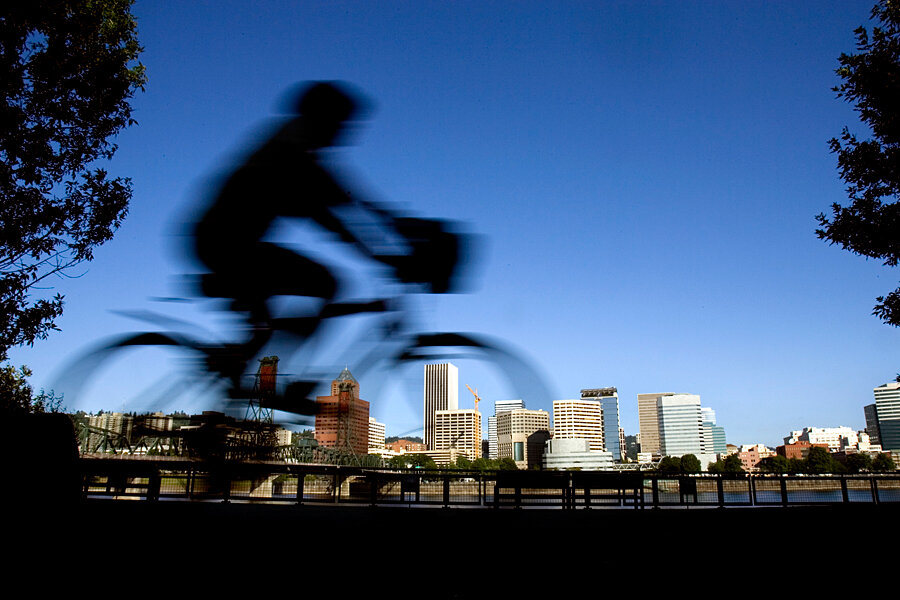More Americans bike to work, but cars still rule the commute
Do you bike to work? No? Didn’t think so.
The average number of Americans who biked to work each year from 2008 to 2012 is up about 61 percent from 2001, reaching 786,000 peddling commuters, according to a new report from the US Census Bureau.
But that number also represents just 0.6 percent of the nation's 140 million workers during the census period, according to the report. The US, the report found, is still the land of the car, with about 86 percent of workers usually driving or carpooling to work. About 5 percent of workers usually take public transportation, and just under 3 percent walk.
The West is the big hot spot for the rise in bicycling, according to the report. Of the big US cities, Portland, Ore., has the highest bicycle commuting rate, at 6.1 percent, and Oregon overall had the highest biking rate of any state, at 2.3 percent. Big cities close behind Portland are Madison, Wis.; Minneapolis; Boise, Idaho; Seattle; San Francisco, and Washington, D.C.
Among mid-size cities, Boulder, Colo., tops the list for peddling, with 10.5 percent of commuters often biking to work. Eugene, Ore., and Berkeley, Calif., are not far behind, along with the East’s college hub, Cambridge, Mass.
For smaller cities, the top ones for biking are all in California and Oregon, with Davis, Calif., placing first at 18.6 percent.
Not every region is big on biking – namely, most of the South, where just 0.3 percent of workers bike to work, versus 1.1 percent in the West. Arkansas, Alabama, Mississippi, Tennessee all have bicycle commuting rates lower than 0.2 percent, according to the report. In Dallas and Fort Worth, Texas, just 0.1 percent of commuters peddle to the office.
The report also found that men bike to work at more than twice the rate women do. The most educated workers – those with graduate or professional degrees – bike to work at the highest rates (0.9 percent), followed by workers who do not have a high school degree (0.7 percent).
In the East, 4.7 percent of workers usually walk to work – a higher rate than for other regions. Six percent of workers in New York State walk to work – the highest of the states, tied with Alaska. Among big cities, Boston has the highest percentage of walking commuters (15.1 percent), followed by the 12 percent of commuters pounding pavement in Washington, D.C. Some college towns boast extremely high walk-to-work rates, including Ithaca, N.Y., at 42 percent. Cities with high walking rates also tend to have high rates of public transportation use, the report found.
The South is not a walking region, with fewer than 2 percent of residents hoofing it to work. Alabama and Tennessee have the lowest rate of walking to work, at 1.2 and 1.3 percent, respectively.
The report credits the increase in biking to major upgrades cities have made to their biking infrastructure during the past decade, including adding bike lanes and bike-share programs.







